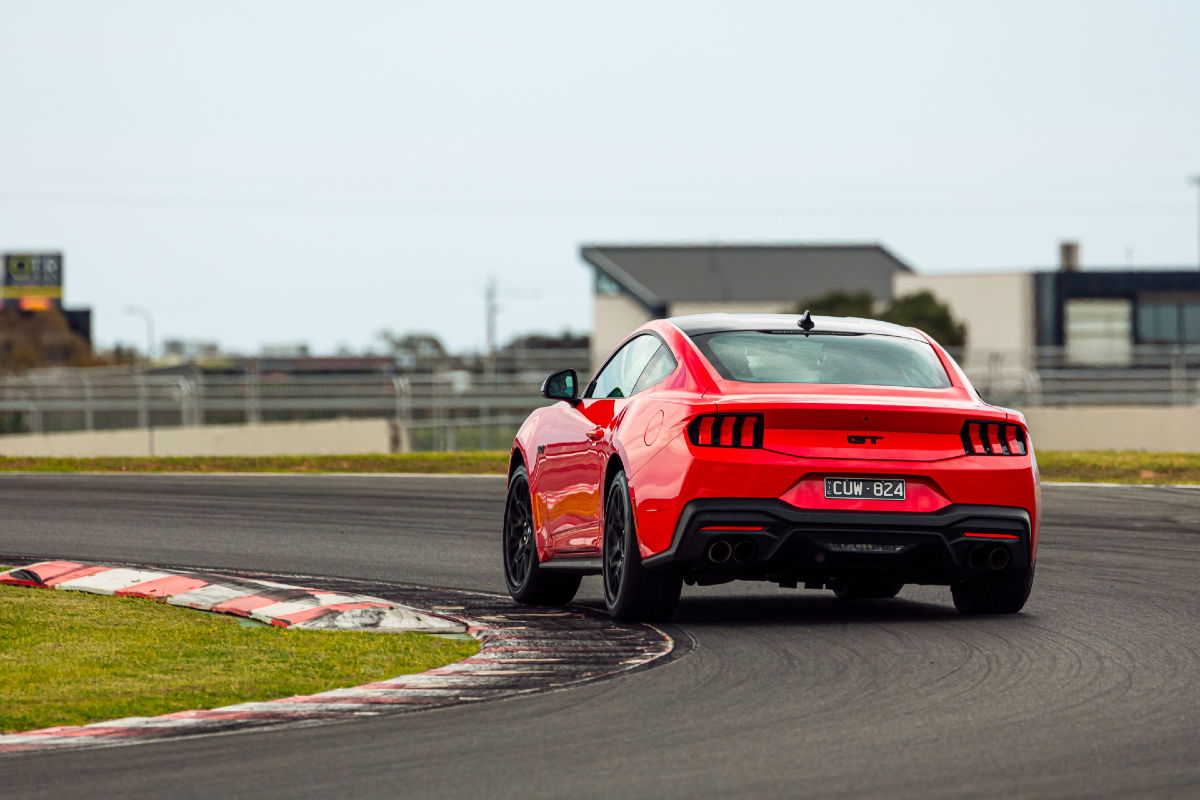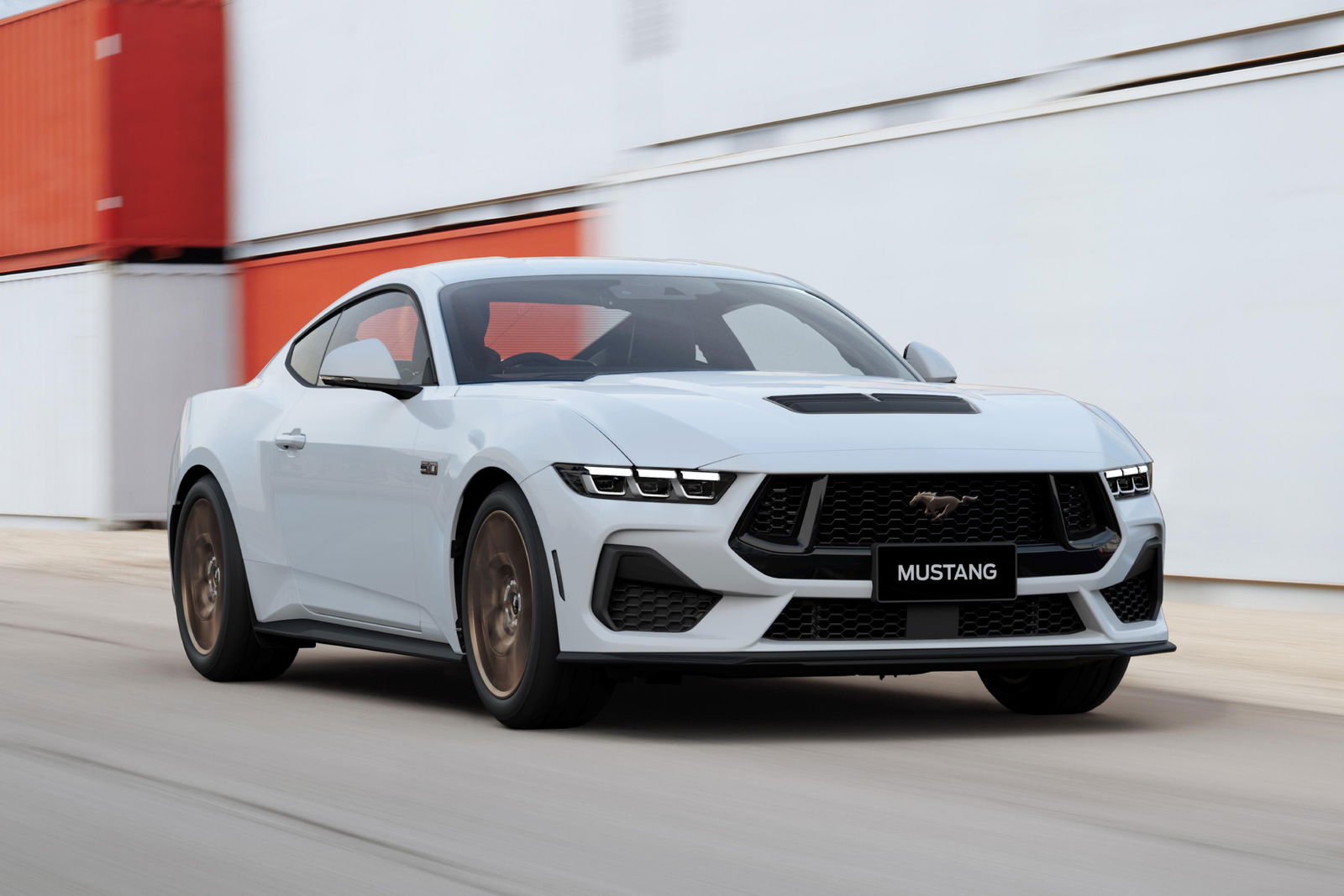Ford has been going back-and-forth with its future electric vehicle plans, amid wavering demand globally and most crucially in its home US market.
After recently revealing plans to launch a new-generation EV platform in a mid-sized pickup from 2027, Automotive News reports Ford has now taken one step back from a proposed upcoming battery-powered model.
According to the publication, Ford “initially considered making the next-generation Mustang electric but pushed back that idea and will be building gasoline-powered pony cars well into next decade”.

It’s unclear if the next-gen Mustang will adopt hybrid power, though it’s almost certain a V8 will remain in the lineup, as Ford executives have made it clear the model won’t lose its bent-eight heart until regulations prevent it from doing so.
A facelift to the S650 Mustang is reportedly due in the US from late 2026. This could impact the Mustang in Australia, at least in the Supercars Championship where Triple Eight is set to take over as the homologation team from next season.
Three seasons of less-than-ideal results for the Mustang and continual debates about its aerodynamic parity to the Chevrolet Camaro – let alone the upcoming arrival of the Toyota Supra – could mean it would be a prime candidate for re-homologation post-facelift.
A new-generation model – its eighth in total – is set to only be petrol-powered, and is likely to launch around 2029, about seven years after the current ‘S650’ pony car broke cover.

While it’s not yet clear what environment it’ll launch in over in the US – where the Donald Trump Administration has repealed financial penalties for carmakers who exceed emissions limits – however the next Mustang is likely to be made compliant with tighter regulations in other markets.
By 2029, Australia’s New Vehicle Efficiency Standard (NVES) would have reached its most stringent level announced so far, with passenger cars like the Mustang will have to produce no more than 58g of CO2 per kilometre (g/km) to avoid Ford paying a $100 penalty for every car sold.
At present, the Australian-delivered Mustang Ecoboost (turbocharged 2.3-litre four-cylinder) emits 215g/km, the GT (5.0-litre V8) manual 310g/km, and both the GT automatic coupe and automatic 293g/km – significantly more than not only the 2029 limit, but also the 2025 limit of 141g/km.
In the case of the latter, the Ford Mustang has already copped a price rise of $5000 across the board, announced last month and due in part to the NVES. A smaller $1000 increase was communicated earlier this week, though only affects 2026 examples, due in showrooms between January and March.














Discussion about this post